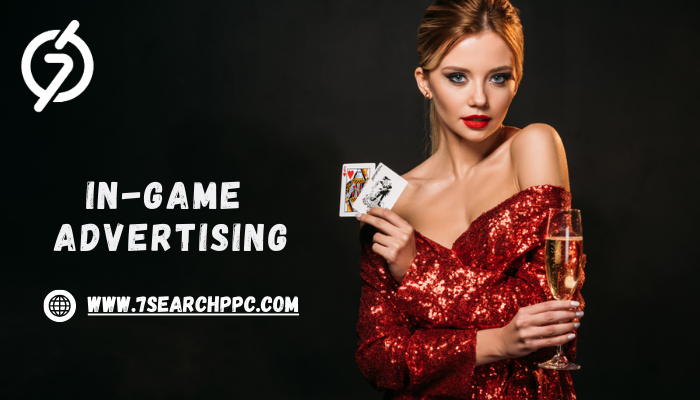The gaming industry is booming, with millions of players engaging in immersive digital experiences daily. As a result, in-game advertising has become a powerful tool for brands looking to reach a highly engaged audience. Whether it’s mobile, console, or PC gaming, the right game ads can help businesses connect with players in a non-intrusive and interactive way.
In this article, we’ll explore the most effective game advertising techniques, how to integrate ads seamlessly into games, and how businesses can outshine competitors in the gaming ad space.
Understanding In-Game Advertising
What Is In-Game Advertising?
In-game advertising refers to the integration of advertisements within video games. These ads appear naturally within the gaming environment, allowing brands to engage players without disrupting their experience.
Types of game ads include:
- Static Ads – Fixed ads placed within the game environment, such as billboards in racing games.
- Dynamic Ads – Ads that change in real time based on player location or online connectivity.
- Interstitial Ads – Full-screen ads displayed between game levels or during natural breaks.
- Rewarded Ads – Players voluntarily watch ads in exchange for in-game rewards.
- Product Placements – Real-world products integrated into the game narrative.
Why In-Game Advertising Is Essential
Game advertising is highly effective because:
- Players spend significant time in-game, ensuring high engagement.
- Ads feel natural within the gaming experience, leading to better acceptance.
- It allows precise targeting based on demographics, location, and player behavior.
- Gamers often have strong brand recall due to repeated ad exposure.
Effective In-Game Advertising Techniques
Native Advertising for a Seamless Experience
Native ads blend seamlessly into the gaming environment, making them feel like a natural part of the game rather than a disruption.
How to Use Native Ads Effectively
- Integrate ads into in-game objects – Example: Virtual billboards in open-world games.
- Use brand-sponsored skins or items – Example: A brand sponsoring custom player outfits.
- Feature brand-related challenges – Example: Completing a branded mission to earn in-game currency.
Rewarded Ads for Higher Engagement
Rewarded ads are among the most effective game ads because they offer players something valuable in return for viewing an advertisement.
Benefits of Rewarded Ads
- Players willingly engage, leading to better brand perception.
- Increases ad completion rates compared to traditional ads.
- Encourages repeat engagement with the brand.
Examples of Rewarded Ads
- Watching a 30-second ad to earn extra lives or game currency.
- Viewing a promotional video to unlock exclusive content.
Dynamic Advertising for Real-Time Ad Updates
Dynamic ads allow advertisers to change their messaging in real time based on audience behavior, location, or campaign updates.
How Dynamic Ads Work
- Ads are placed in virtual spaces like banners or posters within a game.
- Advertisers can swap out the ad content dynamically, ensuring relevance.
- Location-based targeting allows brands to deliver personalized ads to gamers.
Product Placement for Subtle Branding
Product placement is one of the most organic ways to integrate brands into games. By embedding real-world products in gameplay, brands can enhance recognition without interrupting the experience.
Best Practices for Product Placement
- Include branded food, clothing, or vehicles within the game.
- Feature brand-sponsored weapons or tools in action games.
- Make real-world products interactive (e.g., using a Coca-Cola vending machine to restore health).
Playable Ads for Hands-On Interaction
Playable ads offer a short, interactive version of a game or product, allowing players to engage before making a purchase or download decision.
Why Playable Ads Work
- Users get a taste of the game experience, increasing conversion rates.
- Gamers remember interactive experiences better than static ads.
- They provide instant gratification, encouraging further interaction.
Esports Sponsorships for Maximum Brand Exposure
Esports has transformed gaming into a global competitive industry, with millions of fans tuning into live tournaments. Sponsoring esports teams or events can elevate brand visibility in the gaming community.
Ways to Advertise in Esports
- Sponsor gaming tournaments or professional players.
- Feature brand logos on esports team jerseys.
- Advertise during live-streamed esports events.
Influencer Marketing in the Gaming Space
Gaming influencers have massive followings on platforms like Twitch, YouTube, and TikTok. Partnering with gaming influencers can amplify brand messaging and create authentic engagement.
How to Use Gaming Influencers
- Sponsor gaming content creators to review or mention products.
- Launch influencer-hosted gaming challenges with brand incentives.
- Feature influencers in branded in-game events.
Optimizing Game Advertising for Maximum Impact
Target the Right Audience
Understanding player demographics is crucial for effective ad placement. Consider:
- Age and gender distribution of the game’s audience.
- Gaming habits and in-game spending behavior.
- Preferred game genres (e.g., casual, strategy, action).
Maintain a Non-Intrusive Ad Experience
The best game advertising integrates seamlessly into gameplay. Avoid:
- Overly aggressive ads that disrupt the gaming experience.
- Forced ad placements that frustrate players.
- Irrelevant ads that don’t align with the gaming audience.
Measure Performance and Optimize Campaigns
Tracking ad performance ensures advertisers get the best ROI. Key metrics include:
- Ad engagement rates – How often players interact with ads.
- Click-through rates (CTR) – Percentage of players clicking on ads.
- Brand recall and recognition – Surveys to measure ad effectiveness.
- Retention rates – Whether ads lead to long-term engagement.
The Future of In-Game Advertising
The Rise of AR & VR Game Advertising
With the growth of augmented reality (AR) and virtual reality (VR), brands can create immersive ad experiences that feel even more natural within games.
- AR ads allow players to interact with branded elements in their real-world environment.
- VR ads enable fully immersive experiences, such as trying out a product in a virtual store.
AI-Powered Personalized Advertising
AI technology enables highly personalized game ads, improving targeting accuracy and engagement.
- AI can analyze player behavior to deliver relevant ad content.
- Smart recommendations ensure players see ads that match their interests.
Blockchain and NFT Integration in Games
Blockchain technology and non-fungible tokens (NFTs) offer new opportunities for branded digital assets within games.
- Brands can create limited-edition in-game items as NFTs.
- Players can trade and sell branded digital goods.
Conclusion
In-game advertising is revolutionizing the way brands connect with digital audiences. By leveraging dynamic ads, rewarded placements, influencer marketing, and esports sponsorships, businesses can engage gamers effectively while maintaining an enjoyable user experience.
To stay ahead of competitors, brands must continually adapt to emerging technologies like AI, AR, VR, and blockchain, ensuring their game advertising strategies remain innovative and impactful.
With the right approach, game ads can drive brand recognition, customer engagement, and long-term business success in the ever-evolving gaming industry.



